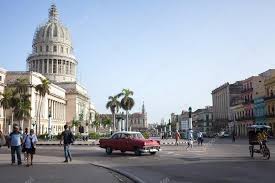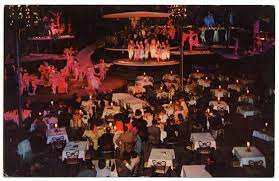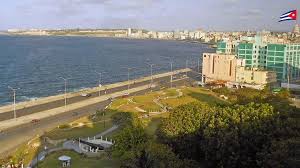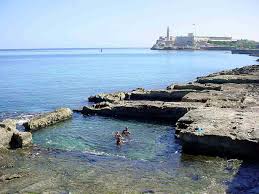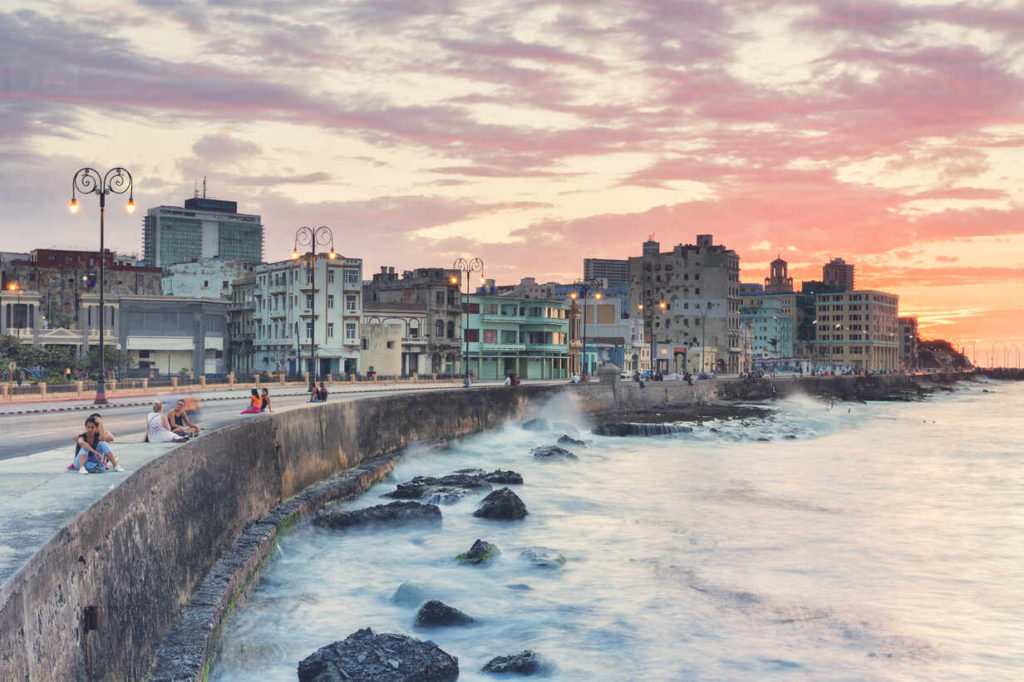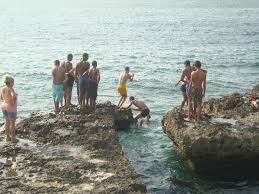SANTA CLARA, VILLA CLARA, CUBA. LA QUINTA CIUDAD MÁS GRANDE DE LA ISLA. FOTOS
Santa Clara es la ciudad capital de la provincia cubana de Villa Clara. Se ubica en la región más central de la provincia y casi en la región más central del país.
Antes del 1 de enero de 1977, Santa Clara estaba ubicada en la provincia de Las Villas. En esa fecha, como parte de un reordenamiento administrativo general de las provincias de Cuba, la provincia de Las Villas fue reordenada en las provincias de Villa Clara, Cienfuegos y Sancti Spíritus. Santa Clara se encuentra en la provincia que ahora se conoce como Villa Clara.
Con una población cercana a un cuarto de millón, Santa Clara es la quinta ciudad cubana más grande por población.
Situada en una llanura debajo de una ladera, en el centro de su provincia, Santa Clara dista 71,5 km del Mar Caribe (en Cienfuegos) y 51,7 km del Océano Atlántico (en Caibarién). En 2004, el municipio de Santa Clara tenía una población de 237,581. Con una superficie total de 514 km2 (198 millas cuadradas), tiene una densidad de población de 462,2 / km2 (1.197 / mi2).
HISTORIA
Santa Clara fue fundada por 175 personas el 15 de julio de 1689. Ciento treinta y ocho de ellas estaban representadas por dos familias numerosas que ya vivían en la zona y, por tanto, dueños de los terrenos aledaños a la nueva ciudad. Los otros 37 procedían de otras 7 familias, un sacerdote y un gobernador, todos ellos originarios de la ciudad costera de “San Juan de Los Remedios”.
La población de Remedios se debatió entre la opción de abandonar su ciudad, constantemente asediada por ataques piratas, o quedarse en el lugar. Si bien la mayoría de ellos finalmente decidió quedarse, estas 37 personas viajaron hacia el sur y, el 1 de junio de 1689, llegaron al cerro donde se reunieron con las otras dos familias existentes. Se dio una misa bajo un supuesto tamarindo y nació la ciudad. Desde entonces, el lugar bajo el árbol se conoce como “Loma del Carmen” (Cerro del Carmen). Existe una iglesia de segunda generación en un hermoso parque junto con el lugar con un monumento que conmemora el evento rodeado por un árbol de tamarindo de cuarta generación.
En sus inicios, el asentamiento se llamó Cayo Nuevo, luego Dos Cayos, Villa Nueva de Santa Clara, Pueblo Nuevo de Antón Díaz, Villa Clara y finalmente Santa Clara.
El reconocimiento de Marta Abreu se debe a los numerosos proyectos que ella y su familia promovieron a través de sus donaciones monetarias destinadas a mejorar la vida de todos los ciudadanos de Santa Clara. Marta Abreu y su esposo Luis Estévez, quien se convirtió en el primer vicepresidente de la joven república en 1902, fueron conocidos simpatizantes y contribuyentes a la causa del rebelde cubano durante la Guerra de Independencia de Cuba contra España.
El legado de Marta se puede ver por toda la ciudad: un edificio de planta eléctrica, varias escuelas, un asilo, lavanderías públicas junto al río Belico (dos de ellas aún existen, lamentablemente en malas condiciones), la estación de bomberos que se puede ver apenas un a una cuadra del Parque Vidal, la estación de tren cerca del Cerro del Carmen, pero ante todo el “Teatro La Caridad” (un teatro llamado en honor a la patrona de Cuba, La Virgen de la Caridad – Nuestra Señora de la Caridad). El teatro se puede admirar en uno de los rincones del Parque Vidal en el centro de la ciudad. Marta fue la única patrocinadora financiera del proyecto. Ella supervisó personalmente su diseño y construcción. Aunque el edificio no es tan grandioso como el Teatro Tomás Terry de la ciudad de Cienfuegos, el concepto detrás de su fundación lo hace más digno: la recaudación del teatro se destinó al apoyo de las dos escuelas que Marta fundó para los niños pobres de la ciudad. Marta está enterrada en el cementerio Colón de La Habana.
ATRACCIONES
En el centro de Santa Clara hay un parque (Parque Vidal) y está colocado en una cuadra entera. En el parque, hay una estatua de Marta Abreu, una persona muy querida por la gente de Santa Clara. Bordeando el parque se encuentra el Santa Clara Libre (antes Santa Clara Hilton), el “Gran Hotel”, el Teatro de La Caridad (Monumento Nacional de Cuba, la Plaza del Mercado Central, el antiguo Ayuntamiento y la Colonia Española de Santa Clara). centro de danza, ofrece las más atractivas y singulares costumbres tradicionales del interior de Cuba.
El Parque Vidal es probablemente uno de los lugares más típicos de Cuba. Durante las tardes, la gente (especialmente los solteros) visita el parque para conocer a otros. Aunque no se practica mucho en los últimos tiempos, la costumbre era caminar por el parque alrededor y alrededor. Las mujeres caminan por la parte interior del parque, mientras que los hombres caminan por la parte exterior. Otra costumbre perdida fue que los lugareños montaran una plataforma y ofrecieran improvisaciones con sus guitarras los domingos por la tarde. Para ese día se vistieron con sus guayaberas y zapatos muy lustrados.
EDUCACIÓN
Santa Clara es sede de la Universidad “Marta Abreu” de Las Villas (en español: Universidad Central “Marta Abreu” de Las Villas (UCLV)), compuesta por un conglomerado de facultades: Ingeniería Eléctrica, Ciencias Agrícolas, Matemáticas, Física e Computación. Ciencias
Humanidades, Derecho, Psicología, Ciencias Sociales, Construcción, Ciencias Empresariales, Ingeniería Mecánica, Química y Farmacia.
GENTE NOTABLE
Marta Abreu (1845-1909), benefactora
José Bernal, artista
Yuniesky Betancourt, campocorto de Grandes Ligas
Mike Cuellar, lanzador de Grandes Ligas
Aledmys Díaz, campocorto de las Grandes Ligas
Newton Estape Vila, fotógrafo y periodista
José Fernández (1992-2016), lanzador de Grandes Ligas
Mirka Francia, jugadora de voleibol cubano-italiana
Rubén González, pianista
Benny ‘Kid’ Paret (1937-1962), boxeador
Moraima Secada, cantante
Miguel Díaz-Canel, decimoséptimo presidente de Cuba
Gerardo Machado y Morales, general, quinto presidente de Cuba (1925-1933)
Marilyn Pupo, actriz y presentadora de televisión cubano-puertorriqueña
SANTA CLARA, VILLA CLARA, CUBA. THE 5th LARGEST CITY OF THE ISLAND. PHOTOS
Santa Clara is the capital city of the Cuban province of Villa Clara. It is located in the most central region of the province and almost in the most central region of the country.
Prior to 1 January 1977, Santa Clara was located in Las Villas Province. On that date, as part of a general administrating reordering of Cuba’s provinces, Las Villas province was reordered into the provinces of Villa Clara, Cienfuegos, and Sancti Spíritus. Santa Clara is in the province now known as Villa Clara.
With a population near a quarter million, Santa Clara is the 5th largest Cuban city by population.
Located on a plain below a hillside, in the middle of its province, Santa Clara is 71.5 km far from the Caribbean Sea (at Cienfuegos) and 51.7 km from the Atlantic Ocean (at Caibarién). In 2004, the municipality of Santa Clara had a population of 237,581. With a total area of 514 km2 (198 sq mi), it has a population density of 462.2/km2 (1,197/sq mi).
HISTORY
Santa Clara was founded by 175 people on July 15, 1689. One hundred and thirty-eight of them were represented by two large families already living in the area and, therefore, owners of the land next to the new city. The other 37 came from 7 other families, a priest, and a governor, all of them originating in the coastal city of “San Juan de Los Remedios”.
The population of Remedios was torn between the option of leaving their city, constantly besieged by pirate attacks, or staying in place. While most of them finally decided to stay, these 37 persons traveled south and, on June 1, 1689, they arrived at the hill where they rejoined the other two existing families. A mass was given under a supposed Tamarind tree and the city was born. Since then, the place under the tree is known as “Loma Del Carmen” (Carmen’s Hill). A second-generation church exists in a beautiful park along with the place with a monument commemorating the event surrounded by a fourth-generation Tamarind tree.
At its beginnings, the settlement was called Cayo Nuevo, then Dos Cayos, Villa Nueva de Santa Clara, Pueblo Nuevo de Antón Díaz, Villa Clara and finally Santa Clara.
Marta Abreu’s acclaim is due to the numerous projects she and her family promoted through their monetary donations intended to enhance the life of all citizens of Santa Clara. Marta Abreu and her husband Luis Estévez, who became the first Vice President of the young republic in 1902, were well-known sympathizers and contributors to the Cuban rebel’s cause during the War of Cuban Independence against Spain.
Marta’s legacy can be seen all over the city: an electric plant building, several schools, an asylum, public laundry stations by the Belico river (two of them still exist, unfortunately in poor conditions), the fire station that can be seen just a block off the Parque Vidal, the train station near Carmen’s Hill, but first and foremost the “Teatro La Caridad” (a theater named in honor of the patron saint of Cuba, La Virgen de la Caridad – Our Lady of Charity). The theater can be admired in one of the corners of the Parque Vidal in the center of the city. Marta was the project’s sole financial sponsor. She personally supervised its design and construction. Although the building is not as grandiose as the Teatro Tomás Terry in Cienfuegos city, the concept behind its founding makes it most worthy: the proceeds of the theater were destined for the support of the two schools Marta founded for poor children of the city. Marta is buried in the Colón cemetery of Havana.
ATTRACTIONS
In Santa Clara’s center is a park (Parque Vidal) and it is laid on an entire square block. In the park, there is a statue of Marta Abreu, a person much loved by the people of Santa Clara. Bordering the park is the Santa Clara Libre (formerly the Santa Clara Hilton), “Gran Hotel”, Teatro de La Caridad (a National Monument of Cuba, the Plaza del Mercado Central, the former City Hall, and the Colonia Española de Santa Clara center of dance, offers the most attractive and unique traditional customs of hinterland Cuba.
Parque Vidal is probably one of the most typical places in Cuba. During the afternoons, people (especially singles) visit the park to meet others. Although not widely practiced in recent times, the custom was to walk the park around and around. The women walk the inner part of the park, while the men walk the outer side. Another lost custom was for the locals to set up a platform and offer improvisations with their guitars on late Sunday afternoons. For that day they dressed in their Guayaberas and highly polished shoes.
EDUCATION
Santa Clara is home to the University “Marta Abreu” of Las Villas (Spanish: Universidad Central “Marta Abreu” de Las Villas (UCLV)), composed of a conglomerate of faculties: Electrical Engineering, Agricultural Sciences, Mathematics, Physics, and Computer Sciences
Humanities, Law, Psychology, Social Sciences, Construction, Managerial Sciences, Mechanical Engineering, Chemistry, and Pharmacy.
NOTABLE PEOPLE
Marta Abreu (1845−1909), benefactress
José Bernal, artist
Yuniesky Betancourt, Major League Baseball shortstop
Mike Cuellar, Major League Baseball pitcher
Aledmys Díaz, Major League Baseball shortstop
Newton Estape Vila, photographer, and journalist
José Fernández (1992−2016), Major League Baseball pitcher
Mirka Francia, Cuban-Italian volleyball player
Rubén González, pianist
Benny ‘Kid’ Paret (1937−1962), boxer
Moraima Secada, singer
Miguel Díaz-Canel, 17th president of Cuba
Gerardo Machado y Morales, general, 5th president of Cuba (1925–1933)
Marilyn Pupo, Cuban-Puerto Rican actress and television host
Agencies/ Wiki/ SantaClaraHist./ Extractos/ Excerpts/ Internet Photos/ Arnoldo Varona/ www.TheCubanHistory.com
THE CUBAN HISTORY, HOLLYWOOD.
















